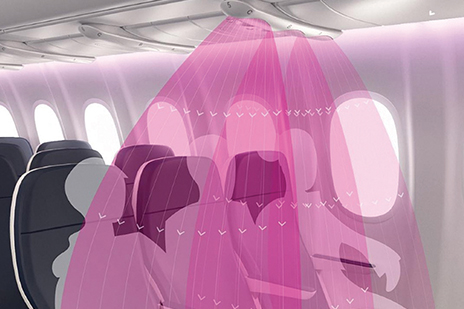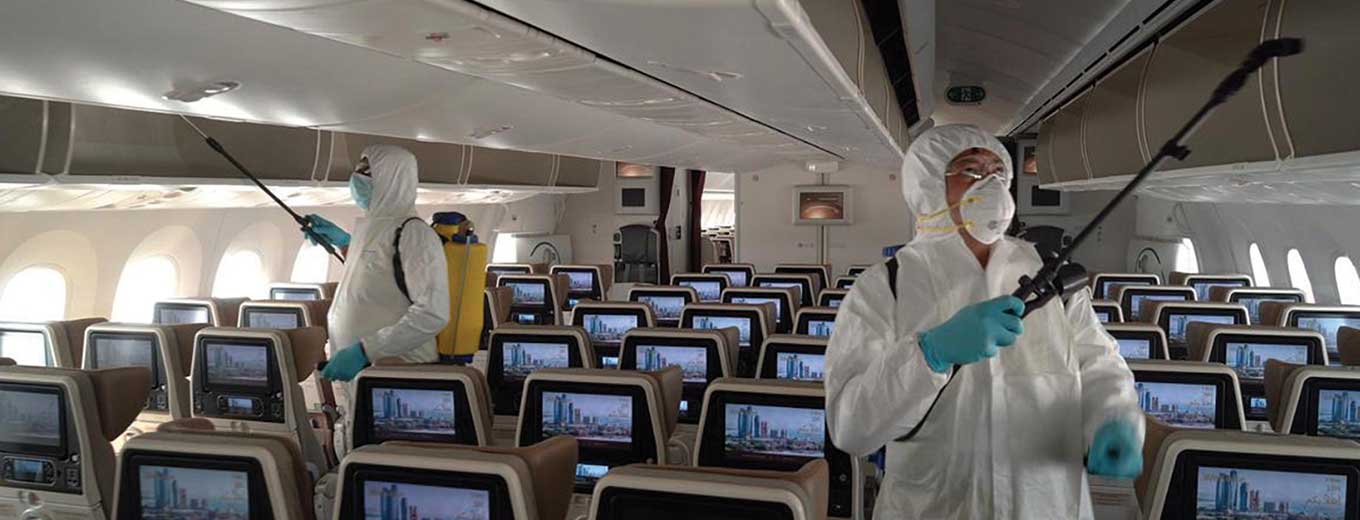Contrary to what many would-be passengers think, the risk of catching COVID-19 while travelling on an aircraft is very low, says Lorenz Amiet, CEO of Keller Swiss Group. Here, he explains how physics works in favour of the health of passengers and makes some recommendations to further mitigate the risk of an infection
After the hospitality and entertainment sectors, air travel is probably the industry that has been hit hardest by COVID-19. According to IATA, commercial air travel plummeted to an astonishing 5.7 per cent of last year’s figures during April (measured in revenue passenger kilometres, RPK).
While this decline is mostly because of travel and immigration restrictions, passenger safety concerns are a significant contributor as well. The perception is that travelling in a narrow tin box, with very little separation from other passengers, cannot be safe during the COVID-19 pandemic. Social distancing does not work on aircraft, as filling empty middle seats is critical to viable, profitable operations.
In the upcoming months, fear of an infection on board an aircraft must be overcome to bring passengers back to the sky. So, airlines around the world are demonstrating publicly their efforts to keep their fleet clean. Cabins are sanitised after each flight and the distribution of food and beverages inflight is limited. All of this can help to reassure passengers; however, the main reason flying is comparatively safe lies in the physics of cabin pressurisation.
Technology
Aircraft fly most efficiently approximately 10-12km (33,000-40,000ft) above ground. At these altitudes, the air pressure is too low for human beings to be able to breathe and, hence, survive. For this reason, the cabins of all airliners are pressurised, which artificially creates an environment equal to the one found at an altitude of 2.1-2.4km (7,000-8,000ft) above sea level. It would be uneconomical to build the fuselage completely airtight, so the pressure inside the fuselage is created by constantly blowing large quantities of air into the cabin. On most aircraft, this pressurised air is taken from the compressor of the engine. The compressed air is completely exchanged every two to three minutes.
Flying is probably the safest mode of transport in a time of pandemic
Years ago, when smoking was still allowed on aircraft, all the air blown into the fuselage was fresh air. As stealing the bleed air from the engines increases fuel consumption by approximately three per cent, only 30 to 50 per cent of the air nowadays is actually fresh, while the rest is recycled and filtered.
Aircraft are equipped with so-called HEPA (high-efficiency particulate air) filters, similar to those used in operating theatres at hospitals. They filter at least 99.95 per cent of particles in the size category of a virus. Therefore, the quality of the recycled air is almost as good as the fresh air taken from the engine, and, collectively, they are much cleaner than the air on the ground.
Airflow
Importantly, on most commercial aircraft, air is pumped into the fuselage from the ceiling, while the exit ducts are typically next to the floor, underneath the windows. This allows the air to cycle through the cabin top to bottom (see illustration). While there is significant vertical movement of air, there is only very little longitudinal movement.

This means, for example, that if a passenger sneezes, those sitting in the same row on the same side of the aircraft should stop breathing for a moment, whereas those sitting in front or behind the person who sneezed don’t need to be worried. Simulation has shown that viruses and bacteria will not affect anybody on an aircraft other than those sitting in the same row of seats or in the row immediately behind the emitter next to the window.
The risk of an infection increases, however, when passengers move around the aircraft, so it is recommended that everyone stays seated throughout the entire flight.
latest research
Recent research suggests that ultraviolet light of a certain wavelength may be effective in killing the SARS-CoV-2 virus and further studies may open up this option to airlines for sanitising their cabins. Emitting UV light through special lamps would be easy to implement on aircraft, especially as the devices are small and light.
Design firm Teague has proposed an interesting concept to protect passengers from their neighbours. It suggests redesigning the nozzles of the individual overhead ventilators so that the airstream creates a ‘veil’ around the head of each passenger. A similar effect can be created already with the existing nozzles, which is why it is recommended to keep the nozzles fully open during flight.
The real risk
It is widely accepted that the biggest risk of death or injury in air travel is the drive to and from the airport. Similarly, the biggest risk of catching COVID-19 is on the train ride to and from the airport, as well as when queuing at check-in, security, immigration or when boarding. Social distancing is particularly important in these situations.
Conclusion
Flying is most probably the safest mode of transport in a time of pandemic. The risk of an infection is certainly much lower than on any other mode of public transport, such as on a train or a bus. However, the risk at the airport needs to be managed, particularly when queuing. Once on board, you may sit back and relax!


